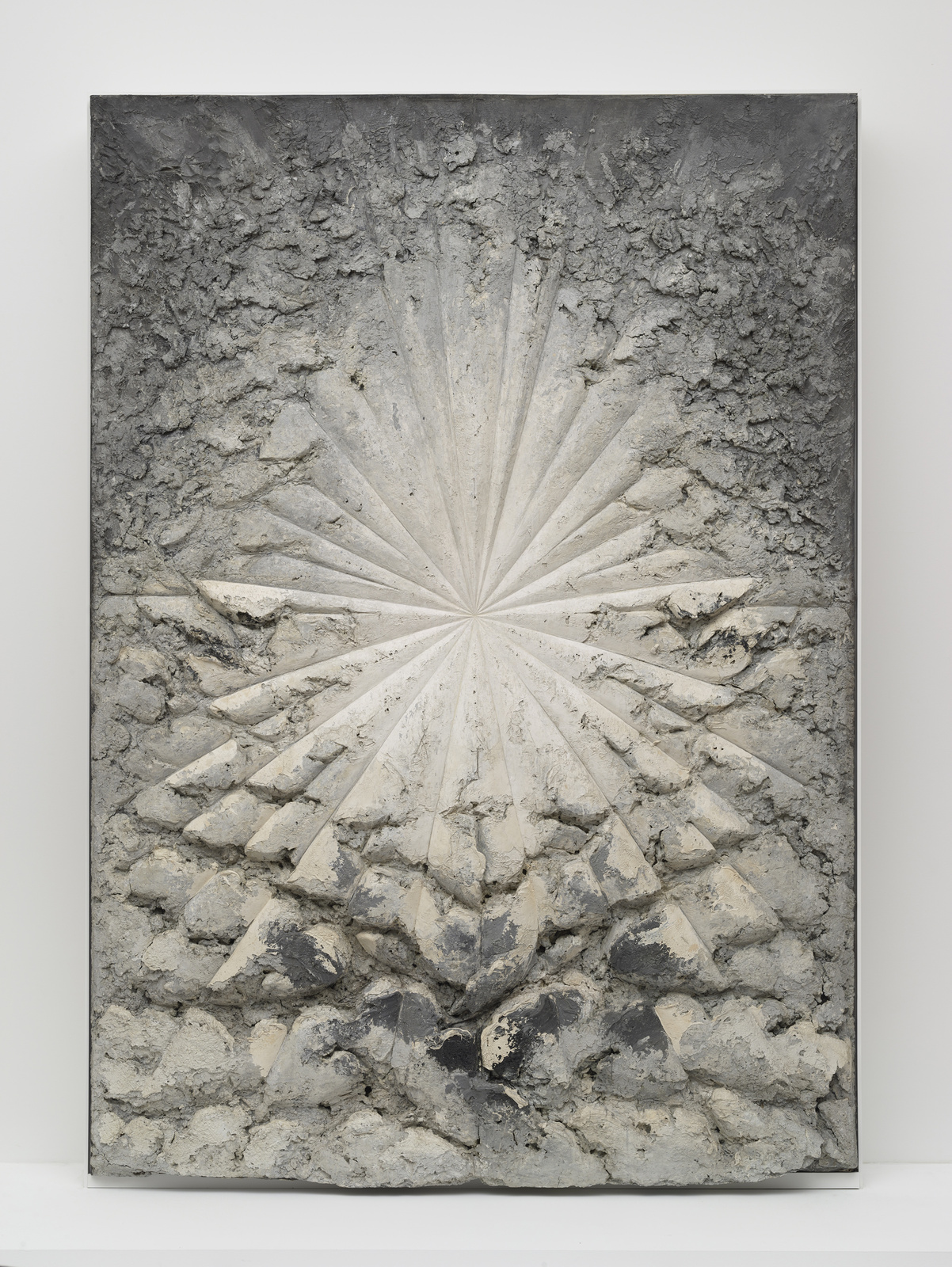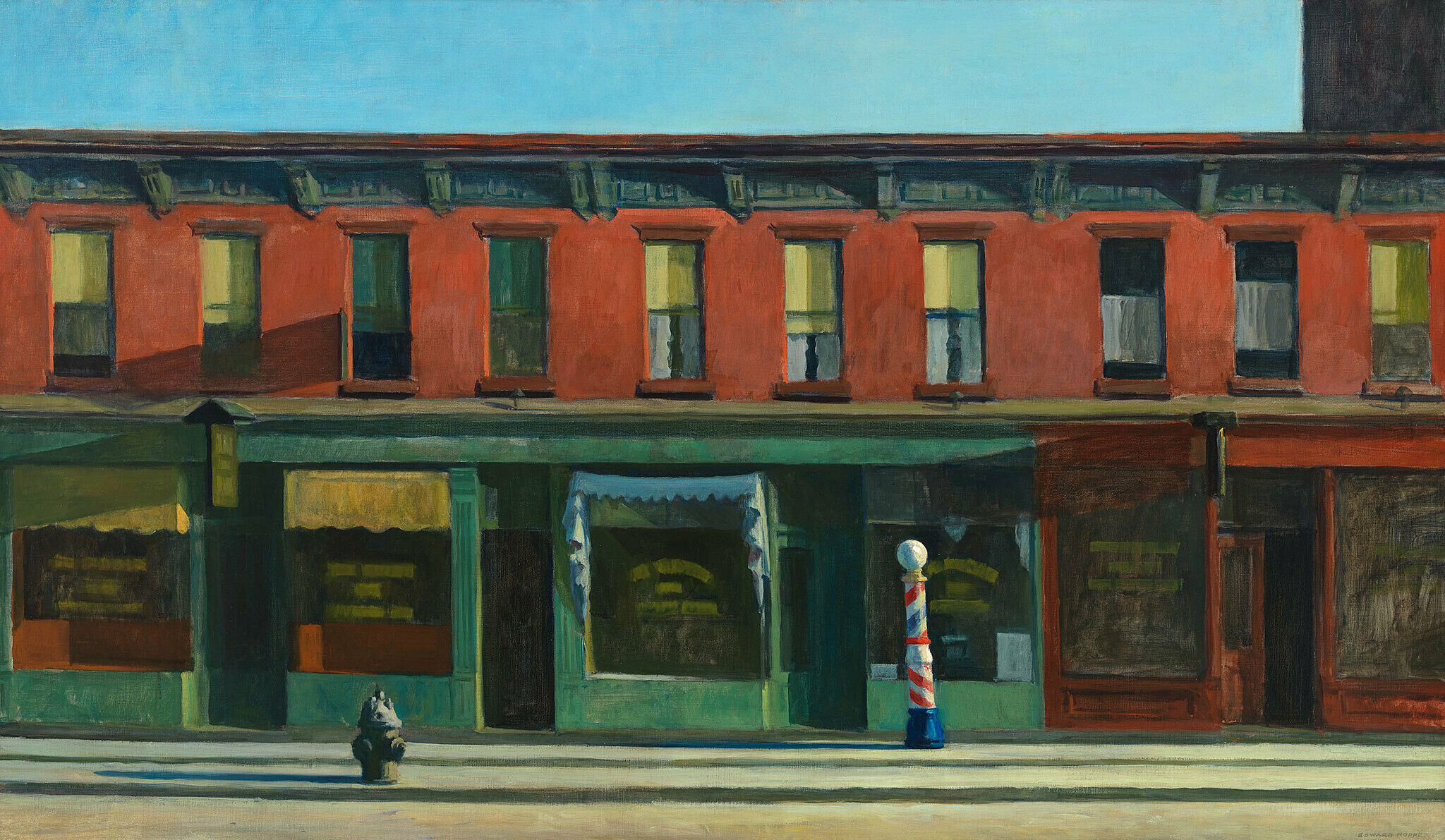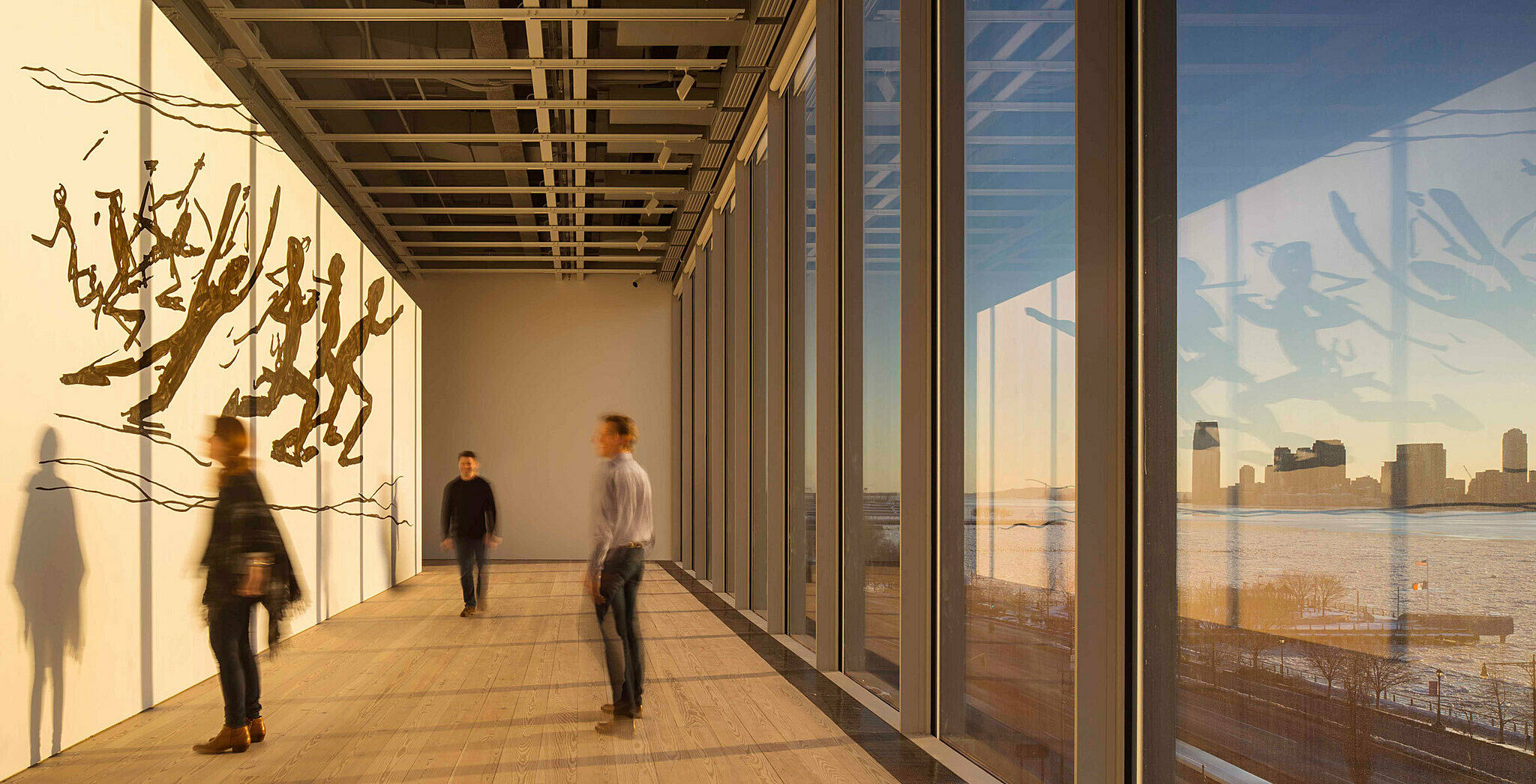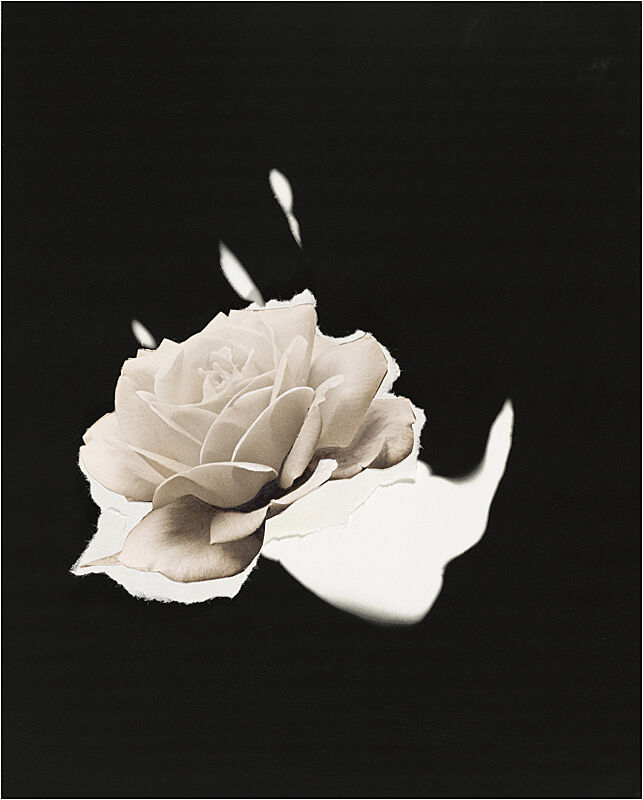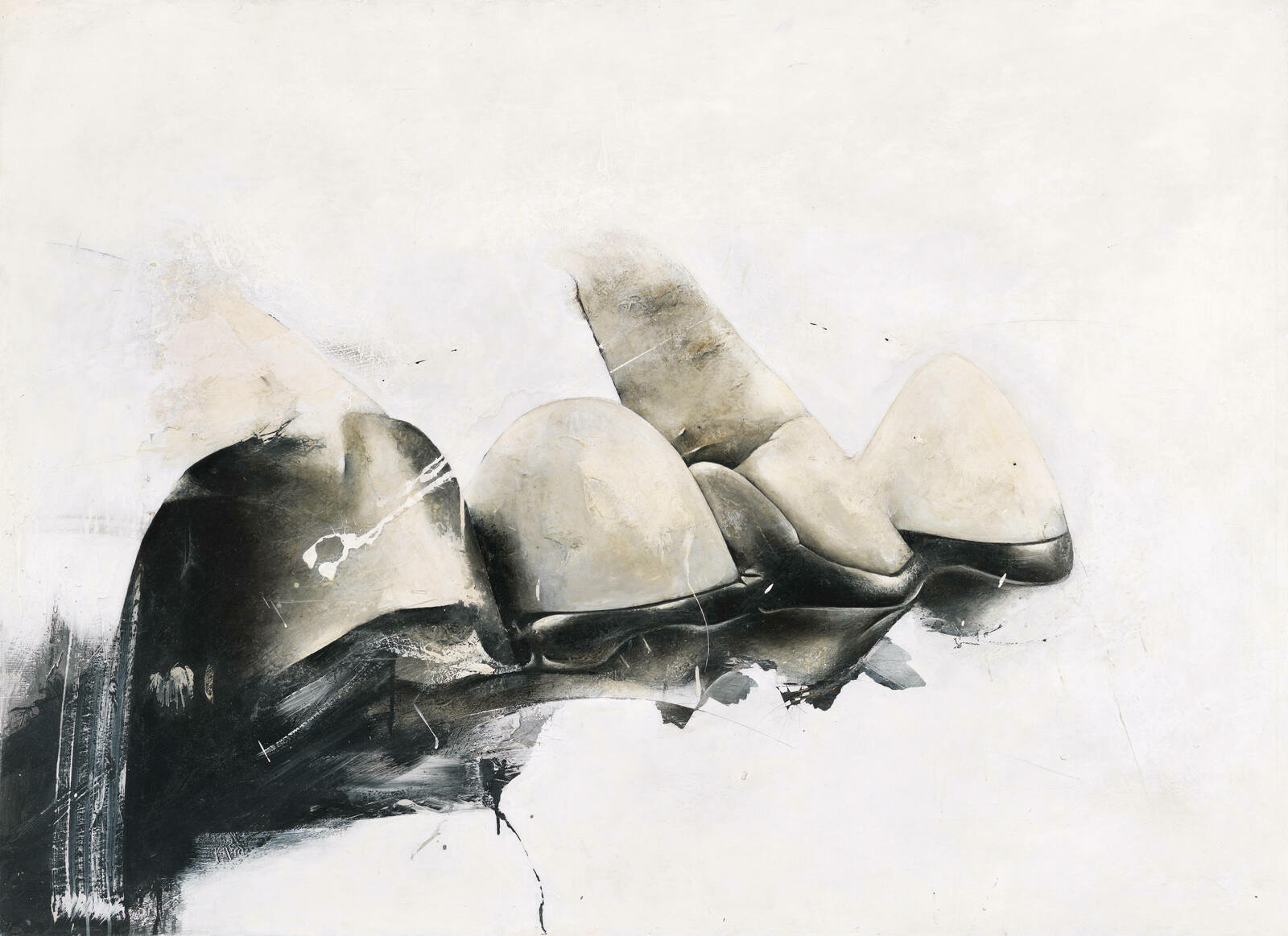Jay DeFeo began this monumental work simply as an “idea that had a center to it.” Initially, the painting measured approximately 9 x 7 feet and was called Deathrose, but in 1959, the artist transferred the work onto a larger canvas with the help of friends. She continued to work on The Rose for the next seven years, applying thick paint, then chiseling it away, inserting wooden dowels to help support the heavier areas of impasto. Now nearly eleven feet tall and weighing almost a ton, the work’s dense, multi-layered surface became, in DeFeo’s words, “a marriage between painting and sculpture.”
First exhibited in 1969, The Rose was taken to the San Francisco Art Institute, where it was covered with plaster for support and protection, and finally stored behind the wall of a conference room. Legend grew about the painting, but it remained sealed until 1995, when Whitney curator Lisa Phillips had it excavated and restored by a team of conservators, who created a backing strong enough to support the heavy paint. DeFeo resisted offering an explanation or interpretation of the work, although she did acknowledge that despite the work’s enormous size and rough surfaces, there was a connection to “the way actual rose petals are formed and how they relate to each other in the flower.”
On view
Floor 7
Date
1958–1966
Classification
Paintings
Medium
Oil with wood and mica on canvas
Dimensions
Overall: 128 7/8 × 92 1/4 × 11in. (327.3 × 234.3 × 27.9 cm)
Accession number
95.170
Credit line
Whitney Museum of American Art, New York; gift of The Jay DeFeo Foundation and purchase, with funds from the Contemporary Painting and Sculpture Committee and the Judith Rothschild Foundation
Rights and reproductions
© The Jay DeFeo Foundation/Artists Rights Society (ARS), New York
Videos
Audio
-
Jay DeFeo, La rosa, 1958–1966
In “Untitled” (America) (Kids, Spanish)
0:00
Jay DeFeo, La rosa, 1958–1966
0:00
-
0:00
Jay DeFeo, The Rose, 1958–1966
0:00
Matthew Skopek: I'm Matthew Skopek, the Melva Bucksbaum Director of Conservation at the Whitney Museum of American Art. I specialize in the conservation of paintings in the collection and that role gives me insight into the physical nature of the paint and how it’s applied. The painting is almost entirely oil paint. Mostly titanium white, there are some black, some gray mixed in there. And there are layers, actually, of an aluminum-based paint.
Some of it is just simply building up, like you would've built up impasto. I mean there is applying paint and then it dries and you build up more paint and you build up more paint and you carve it back. But she is going in and giving it support in some areas where she wanted to build up volume faster than just paint would allow. So while it is mostly paint–it's over two thousand pounds of paint–there are some areas where she's added fabric or wood dowels to give it additional support.
We know that the composition changed over time, mostly based on earlier photos. So we have a sense of how the composition changed over time, how the canvas was actually expanded at one point from a smaller canvas to its current scale. And we can also see her working and carving back into the dry paint. You can see chisel marks and maybe even in a few places, it looks like maybe she was using a rasp to sort of carve back through hardened paint to change the position and change the composition.
-
Jay DeFeo, La rosa, 1958–1966
In “Untitled” (America) (Spanish)
0:00
Jay DeFeo, La rosa, 1958–1966
0:00
Matthew Skopek: Soy Matthew Skopek, Director de Conservación Melva Bucksbaum del Whitney Museum of American Art. Me especializo en la conservación de pinturas de la colección y esa función me permite conocer la naturaleza física de la pintura y cómo se aplica. La pintura es casi en su totalidad óleo. En su mayor parte es blanco titanio, con algo de negro y gris mezclados. Y, en realidad, hay capas de pintura a base de aluminio.
Parte de esta pintura se ha ido acumulando, como si se hubiera creado un impasto. Es decir, se aplica la pintura, se seca y se vuelve a aplicar más pintura, y así sucesivamente, hasta que se decide tallar. Pero ella ha intervenido en algunas zonas en las que quería crear volumen más rápidamente de lo que permite la pintura sola.
Así que, aunque es principalmente pintura (más de dos mil libras de pintura), hay algunas zonas en las que ha añadido tela o clavijas de madera para darle más soporte.
Sabemos que la composición cambió con el tiempo, principalmente basándonos en fotos anteriores. Así que tenemos una idea de cómo cambió la composición con el tiempo, cómo se amplió el lienzo en un momento dado, pasando de ser un lienzo más pequeño a su tamaño actual. También podemos ver cómo trabajaba y tallaba la pintura seca. Se pueden ver marcas de cincel y, en algunos lugares, parece que utilizó una escofina para tallar la pintura endurecida y cambiar la posición y la composición.
-
Jay DeFeo, The Rose, 1958–1966
In “Untitled” (America) and The Whitney's Collection: Selections from 1900 to 1965 (Kids)
0:00
Jay DeFeo, The Rose, 1958–1966
0:00
Narrator: What’s the longest you’ve ever worked on a painting? Jay DeFeo spent nearly eight years creating The Rose, by adding thick layers of paint and then scraping massive amounts away.
Layer then scrape—over and over! In between she added things from her day-to-day life: a barrette, bottle cap, keys, and wire.
Sometimes the thick layers of paint would shift overnight. When it did, DeFeo carefully carved the paint until it was back the way she wanted it. Sometimes, a week or even a month later, the paint would shift again! But DeFeo never gave up. She worked through her frustration until it looked exactly the way she wanted.
As you can probably imagine—eight years’ worth of paint makes for one heavy painting! It is 11 inches thick in places, and probably weighs about a ton. That's about twenty-seven fifth graders!
-
0:00
Jay DeFeo, The Rose, 1958–1966
0:00
Narrator: Dana Miller is the former curator of the permanent collection. She curated the Jay DeFeo retrospective that took place here at the Whitney in 2013.
Dana Miller: The Rose is DeFeo's landmark painting. She spent almost eight years working on it, from 1958 to 1966. When she began the work she had really no notion of what she was going to make. She said the only thing she knew was that she was going to create a painting that had a center. And that's what she began with.
She would apply paint using palette knives and trowels, and build it up in this very, very extensive manner and then carve it back and shape it.
There were days where she would walk into the studio in the morning and the paint had shifted overnight. While she had been happy with what it looked like when she left it the evening before, it had been completely ruined in the course of gravity shifting the paint just because of the thick application. And she would have to, in some cases, scrape it all the way back and start over. It was a sum of its destructions in many ways.
Narrator: Jay DeFeo in 1988.
Jay DeFeo: It reached really final stages. Kind of like a whole cycle of art history. It went through a primitive, archaic, classic, and all on up to baroque and then I realized how flamboyant the whole concept had gotten and I kind of pulled it back to a more classical stage. All of those stages were rather interesting and complete in themselves but just not what the final version was, what I intended. And I suppose, I don’t know whether it would have all gone on, on one canvas if I’d had the kind of studio that it could have spread itself out in a little bit. But I just had one big painting wall.
-
0:00
Jay DeFeo, The Rose, 1958–1966
0:00
Narrador: Dana Miller es la excuradora de la colección permanente en el Whitney, y fue la curadora de la retrospectiva de Jay DeFeo en 2013.
Dana Miller: The Rose es la pintura más emblemática de DeFeo. Dedicó casi ocho años a trabajar en ella. Desde 1958 hasta 1966. Cuando comenzó a trabajar en esta obra, no tenía idea de lo que iba a crear. Ella dijo que lo único que sabía era que iba a crear una pintura que tuviera un centro. Y con eso fue que empezó.
Aplicaba la pintura con espátulas y paletas, la engrosaba de una manera muy exhaustiva, y luego la iba esculpiendo y dándole forma.
Había días en que regresaba al estudio por la mañana, y veía que la pintura había cambiado durante la noche. Aunque la noche anterior hubiera salido del estudio contenta con el progreso de la obra, la gravedad la arruinaba por completo debido al grosor de todas las capas de pintura.
A veces tenía que raspar y limar todo de nuevo, y volver a empezar. En varios sentidos, era una suma de destrucciones.
Narrador: Jay DeFeo en 1988.
Jay DeFeo: Alcanzó bastantes etapas finales. Sabes, como una especie de ciclo de historia del arte. Tuvo un momento primitivo, arcaico, clásico, y hasta llegó a un barroco, pero luego me di cuenta de que todo el concepto se había vuelto muy ostentoso, y volví a traerlo a una especie de etapa más clásica. Todas esas etapas eran bastante completas e interesantes en sí mismas, pero simplemente no era la versión final, no era lo que yo quería. Y supongo que no sé si todo habría estado en un único lienzo si hubiera tenido un estudio más grande, que me hubiera permitido extenderla un poco más. Pero solo tenía una única pared grande para pintar.
-
0:00
June 8, 2015
Carol Mancusi-Ungaro on The Rose by Jay DeFeo0:00
-
0:00
Jay DeFeo, The Rose, 1958–66
0:00
Narrator: Curator Dana Miller.
Dana Miller: The Rose is DeFeo's landmark painting. She spent almost eight years working on it. From 1958 to 1966. When she began the work she had really no notion of what she was going to make. She said the only thing she knew was that she was going to create a painting that had a center. That's what she began with.
She would apply paint using palette knives and trowels, and build it up in this very, very extensive manner and then carve it back and shape it.
There were days where she would walk into the studio in the morning and the paint had shifted overnight. While she had been happy with what it looked like when she left the evening before, it had been completely ruined in the course of gravity shifting the paint just because of the thick application.
She would have to, in some cases, scrape it all the way back and start over. It was a sum of its destructions in many ways.
Narrator: Jay DeFeo in 1988.
Jay DeFeo: It reached really final stages. You know, kind of like a whole cycle of art history. It went through a primitive, archaic, classic, and all on up to baroque and then I realized how kind of flamboyant the whole concept had gotten and I kind of pulled it back to a more classical stage. All of those stages were rather complete and interesting in themselves but just not what the final version was, what I intended. And I suppose, I don’t know whether it would have all gone on, on one canvas if I’d had the kind of studio that it could have spread itself out in a little bit. But I just had one big painting wall.
-
0:00
Jay DeFeo, The Rose, 1958–66
0:00
Narrator: In 1958, DeFeo began work on two paintings simultaneously. This one, The Jewel, took her about two years to complete.
She continued working on its counterpart—a work that she initially titled Deathrose—for almost eight years.
In 1959, Dorothy Miller, a curator at the Museum of Modern Art, invited her to include the painting, which was still in progress, in the exhibition Sixteen Americans. It was a tremendous opportunity. This was the exhibition that first brought major attention to the artists Jasper Johns, Robert Rauchenberg, and Frank Stella. DeFeo had five works in the exhibition, but she wasn't willing to let the unfinished Deathrose leave her studio. Still, its photograph appeared in the exhibition catalogue.
When DeFeo began the painting—which she ultimately titled The Rose —its focal point wasn’t positioned at the center of the canvas compositionally. After she’d worked on the painting for about a year, she concluded that it needed to be both larger and centered.
It took sixteen people working all day to cut the enormous painting off of its stretcher and glue it to a bigger canvas. They then wedged the painting tightly into the bay window in DeFeo’s studio.
DeFeo built up the surface with layers of oil paint and carved it back down repeatedly, resulting in multiple different stages over the years. She described those stages in art-historical terms. The photograph on your screen now shows a flamboyantly curving composition—what DeFeo called its “baroque” phase.
Eventually, DeFeo straightened out the lines, so that the final work took on what she described as a more “classical” form.
Exhibitions
Installation photography
-
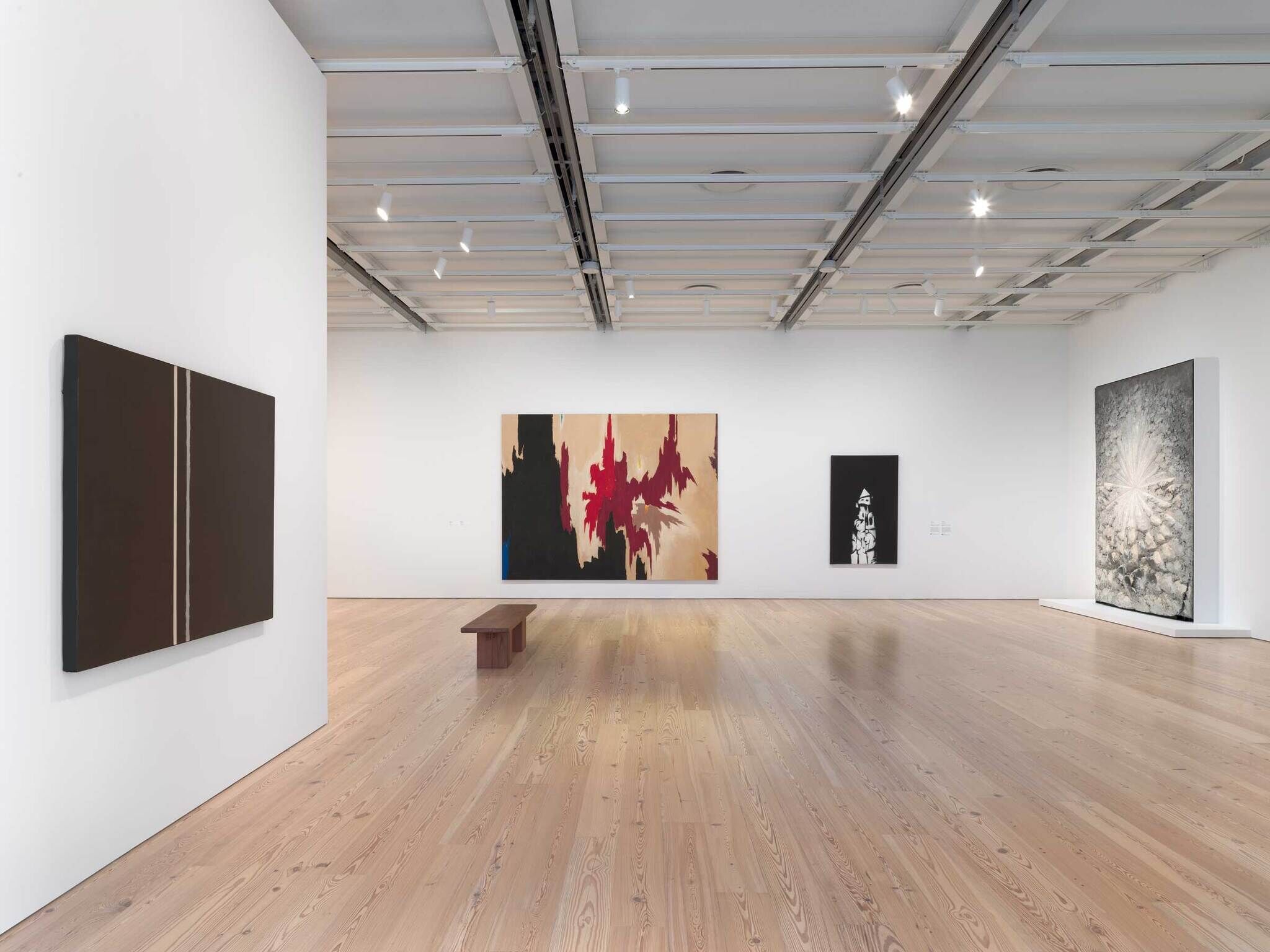

Installation view of “Untitled” (America) (Whitney Museum of American Art, New York, July 5, 2025-). From left to right: Barnett Newman, The Promise, 1949; Clyfford Still, Untitled, 1956; Norman Lewis, American Totem, 1960; Jay DeFeo, The Rose, 1958–66. Photograph by Ron Amstutz
From the exhibition “Untitled” (America)
-
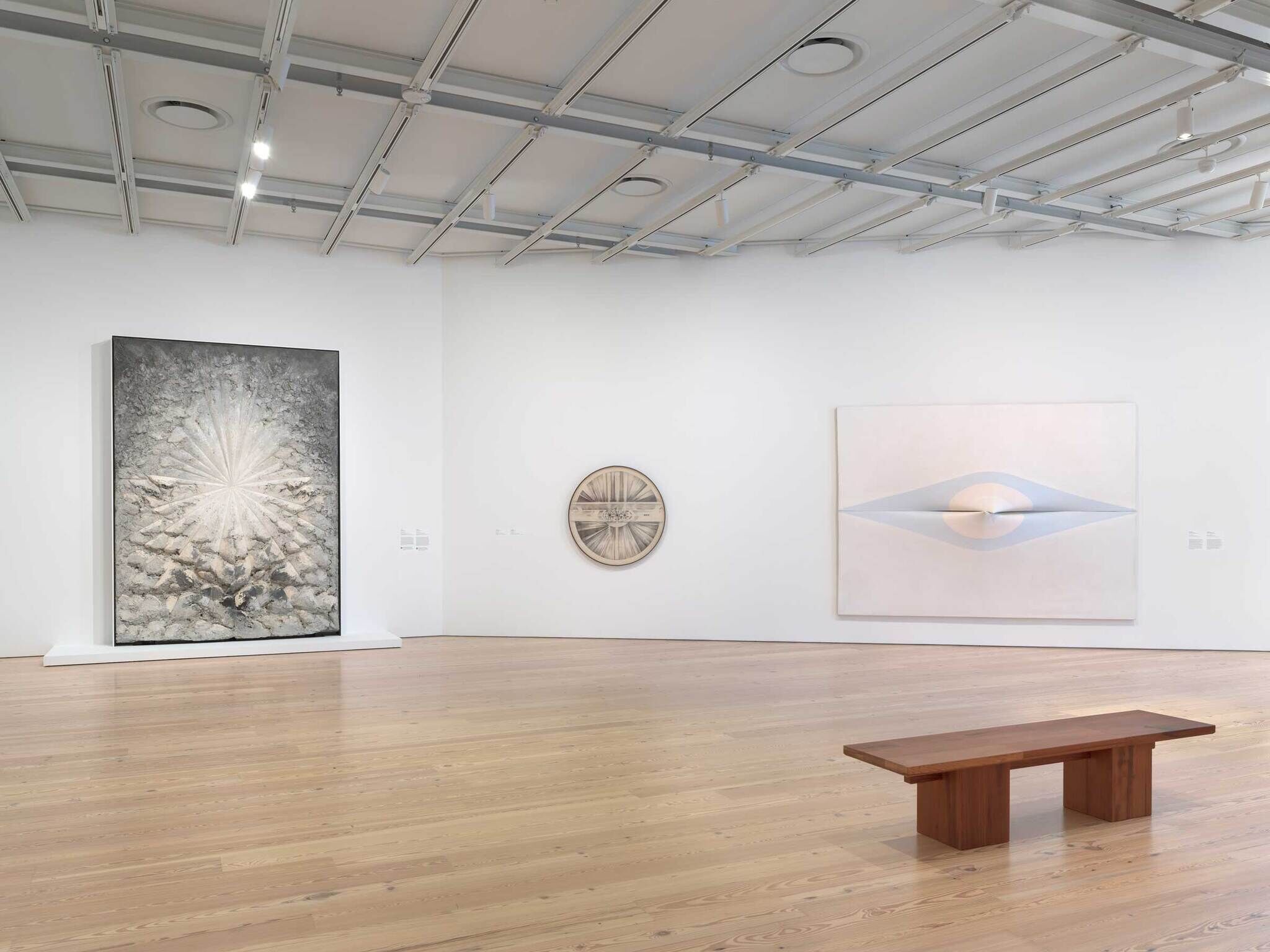

Installation view of “Untitled” (America) (Whitney Museum of American Art, New York, July 5, 2025-). From left to right: Jay DeFeo, The Rose, 1958–66; Lee Bontecou, Untitled, 1963; Zilia Sánchez, Eros, 1976/1998. Photograph by Ron Amstutz
From the exhibition “Untitled” (America)
-
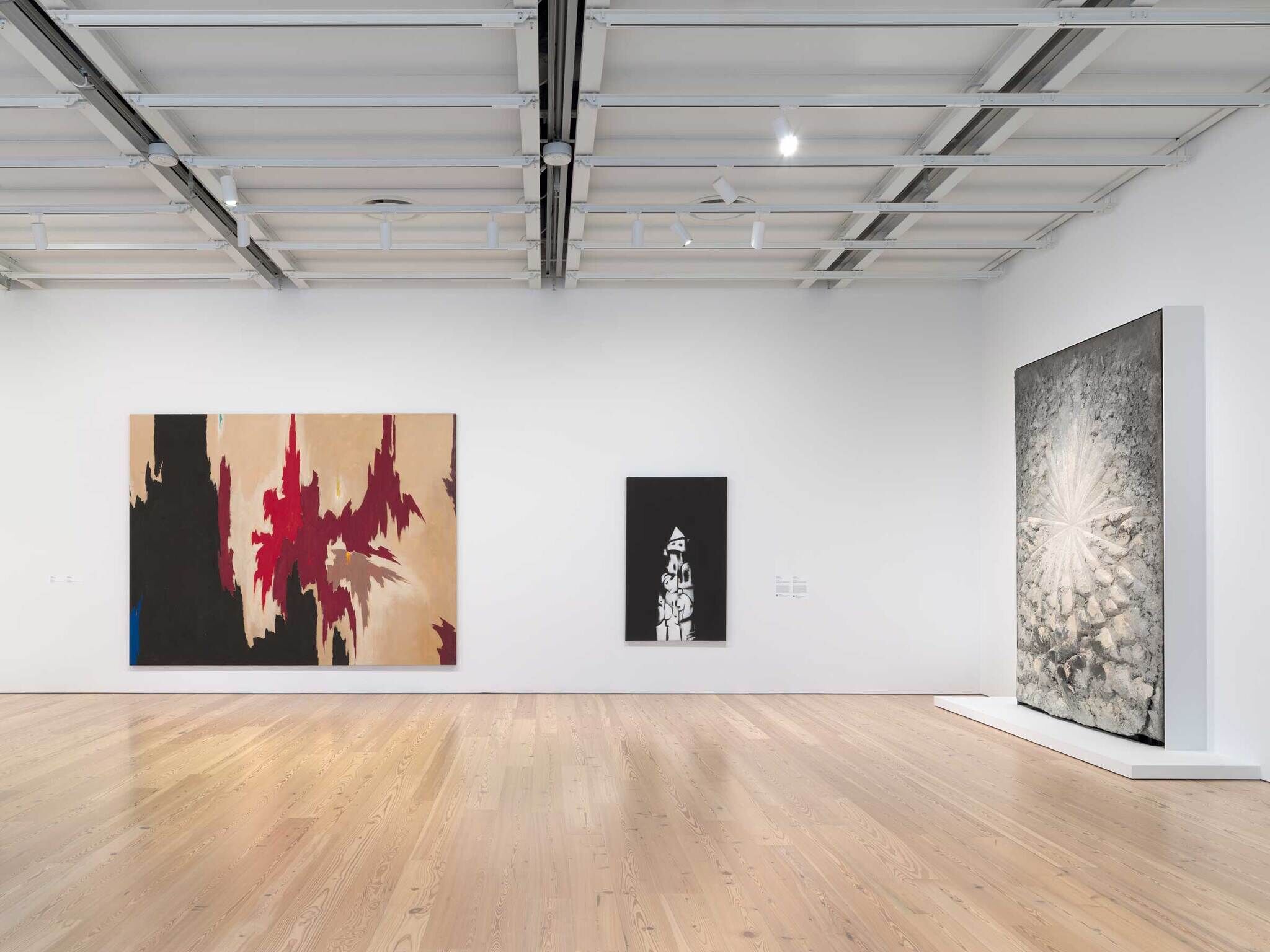

Installation view of “Untitled” (America) (Whitney Museum of American Art, New York, July 5, 2025-). From left to right: Clyfford Still, Untitled, 1956; Norman Lewis, American Totem, 1960; Jay DeFeo, The Rose, 1958–66. Photograph by Ron Amstutz
From the exhibition “Untitled” (America)

